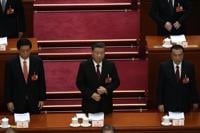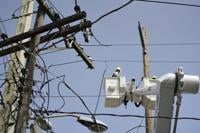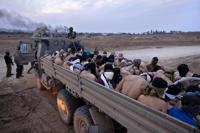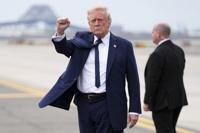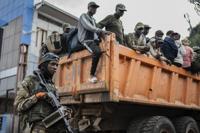China on Sunday announced a 7.2% increase in its defense budget for the coming year, up slightly from last year's 7.1% rate of increase.
That marks the eighth consecutive year of single-digit percentage point increases in what is now the world’s second-largest military budget. The 2023 figure was given as 1.55 trillion yuan ($224 billion), roughly double the figure from 2013.
Along with the world’s biggest standing army, China has the world’s largest navy and recently launched its According to the U.S., it also has the largest aviation force in the Indo-Pacific, with more than half of its fighter planes consisting of fourth or fifth generation models.
China also boasts a massive stockpile of missiles, along with stealth aircraft, bombers capable of delivering nuclear weapons, advanced surface ships and nuclear powered submarines.
The 2 million-member People's Liberation Army is the military wing of the ruling Communist Party, commanded by a party commission led by president and party leader Xi Jinping.
In his report Sunday to the , Premier Li Keqiang said that over the past year, “We remained committed to the Party’s absolute leadership over the people’s armed forces.”
“The people’s armed forces intensified efforts to enhance their political loyalty, to strengthen themselves through reform, scientific and technological advances, and personnel training, and to practice law-based governance,” Li said.
Li touched on what he called a number of “major achievements” in national defense and military development that have made the PLA a “more modernized and capable fighting force.”
He offered no details but cited the armed forces' contributions to border defense, maritime rights protection, counterterrorism and stability maintenance, disaster rescue and relief, the escorting of merchant ships and China's draconian “zero-COVID” strategy that entailed lockdowns, quarantines and other coercive measures.
"We should consolidate and enhance integration of national strategies and strategic capabilities and step up capacity building in science, technology and industries related to national defense." That includes promoting “mutual support between civilian sectors and the military,” he said.
China spent 1.7% of GDP on its military in 2021, according to the World Bank, while the U.S., with its massive overseas obligations, spent a relatively high 3.5%.
Although no longer increasing at the double-digit annual percentage rates of past decades, China’s defense spending has remained relatively high despite skyrocketing levels of government debt and an economy that grew last year at its
Li set a growth target of , as he announced plans for a consumer-led revival of the economy still struggling to shake off the effects of “zero-COVID.”
While the government says most of the spending increases will go toward improving welfare for troops, the PLA has greatly expanded its overseas presence in recent years.
China has already established one foreign military base in the Horn of Africa nation of Djibouti and is refurbishing Cambodia’s Ream Naval Base that could give it at least a semi-permanent presence on the Gulf of Thailand facing the disputed South China Sea.
The modernization effort has prompted concerns among the U.S. and its allies, particularly over Taiwan, the self-governing island democracy that China claims as its territory to be brought under its control by force if necessary.
That has prompted a steady flow of weapons sales to the island from the U.S., including ground systems, air defense missiles and F-16 fighters. Taiwan itself recently extended mandatory military service from four months to one year and has been revitalizing its own defense industries, including for the first time.
In his remarks on Taiwan, Li said the government had followed the party’s "overall policy for the new era on resolving the Taiwan question and resolutely fought against separatism and countered interference."
Along with Taiwan, tensions have been rising with the U.S. over China's militarization of islands in the South China Sea, which it claims virtually in its entirety, and most recently, the shooting down of a suspected Chinese spy balloon over the U.S. east coast.
The huge capacity of China's defense industry and Russia’s massive expenditures of artillery shells and other materiel in its war on Ukraine have raised concerns in the U.S. and elsewhere that Beijing may provide Moscow with military assistance.


